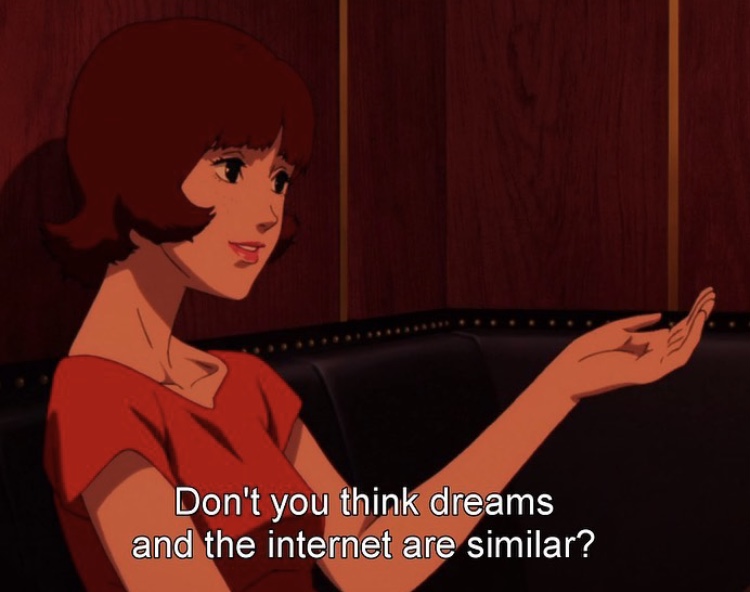For a Digital Humanism, New Media as a Pharmakon

We can all remember the time spent in playgrounds as children. Every single space, from the roots of a tree to an access ramp, could be turned into a different world in which to play. Our imagination seemed to be the only limit to our range of possibilities. My generation might well be the last one pertaining to a long era of humanity: one without the Internet.
In an article published in Eurozine in 2008, Geert Lovink examines the advent of the information era by focusing on the case of Google. He emphasizes the changing nature of knowledge and anticipates accurate phenomena resulting from the “Googlization of our lives”. With this article, Lovink attempts to raise the alarm on key issues emanating from the ‘society of the query’, while also underlining the formidable opportunities that this new technology promises. His claim resonates with the notion of alienation developed by Simondon in 1958. We will see that digital technology may often be designated as guilty by commentators who are not familiar with the mode of existence of technical objects. Drawing upon Lovink’s article and Simondon’s work, I argue that this is characteristic of the absence of a technical culture and by extension, of a digital culture that should be sought in order to free both humans and machines. In this sense, I borrow the concept of Pharmakon to Derrida, Stiegler, and Hui to characterize the web as pharmacological, that is, as a poison, a remedy, and a scapegoat (Hui, 2021; Hui, 2020; Stiegler, 2011; Derrida, 1993).
Lovink first recognizes a change related to the notion of knowledge with the advent of ‘the society of the query’. The production, as well as the access to knowledge, has become considerably easier and common due to the Internet. The author praises this favorable change enabled by digital technology. In fact, a distinction between two classes is often made throughout the text. Between the ‘guarantors’ and ‘owners’ of knowledge on one hand, and the ‘idle talkers’ on the other. These two classes used are linked by a principle of hierarchical authority. However, this principle is currently losing ground to the popularity principle that prevails on digital platforms such as Google’s (van Dijck, 2010, 580; Lovink, 2008).
As Lovink points out, the latter principle does not favor the display of “truth”, but instead responds to a logic of profit accumulation. Platforms making use of the popularity principle consider digital objects only in terms of data. Users are incentivized to express themselves, to react, to share; because it is the best way to keep them logged in and spend time on the platform, which results in higher revenues through advertising (Celis Bueno, 2016).
These new digital platforms, Lovink argues, were designed according to certain principles directed towards a specific goal. The tech giants known as the “GAFA” developed so fast to constitute a quasi-monopoly that users, companies, and governing institutions got outran. As Lovink mentions: “users, and indeed companies, are happily abandoning the power to self-govern their informational resources” (2008). Search engines and digital platforms architectures are taken as they are by users, and most still do not understand their functioning nor question their design. This is, according to Lovink, the biggest problem that characterizes the ‘society of the query’.
In 1958, Gilbert Simondon already shed light on the phenomenon of alienation resulting from a “dissociation between culture and technique” (Hottois, 1993, 51; Simondon, 2012; Reigeluth, 2017). Users are merely operators of digital technology. They cannot fully take part in its invention and reconfiguration, based on their own needs and desires. Instead, they act as mere ‘consumers’ of information, coming in with a given problem and expecting a ready-made solution. This assessment led Lovink to argue that there is a general lack of ‘media literacy’ within contemporary society.
This lack has played a role in the “fake news” phenomenon that took a notable turn during Donald Trump’s presidential campaign and term of office. The expression is particularly revealing, as it supposes the existence of “true news” and thus necessarily excludes the possibility of any nuance. Again, the public is expecting an answer and it must either be yes or no, either fake or true. Officials and public opinion turned to major digital media companies expecting them to become ‘arbiters of truth’. For instance, Instagram has implemented a ‘fact-checking’ program since 2019 (Harrison, 2019).
To put it in a nutshell, Lovink praises the benefits in terms of access and production of knowledge that digital media have to offer. However, he blames the monopoly held by a few private companies over these new environments, insofar as their end of profit accumulation influences their design in a way that does not favor humane characteristics such as reason and critical thinking. Van Dijck (2010) makes a rather similar assessment. Only, she does not seem to see beyond the current status quo and therefore fails to tackle the problem to the root. While she calls for legal regulations and moral responsibility, Lovink takes a different stance and suggests questioning our relationship with technology in terms of digital culture.
Simondon captures the difference between the two authors well by stating:
“The integration of a representation of technical realities to the culture, by an elevation and a widening of the technical domain, must put back in their place, as technical, the problems of finality, considered wrongly as ethical and sometimes as religious. The incompleteness of techniques sacralizes the problems of finality and enslaves the man to the respect of ends that he represents himself as absolutes.”
(Simondon, 2012, 208)
In considering the problems of finality of current digital media as technical, that is, as contingent to a certain mode of development which appears to be economic in the case of Google, and not as absolute, Lovink makes a first step towards integrating a representation of technical realities to the culture. He calls for a “[repurposing of] the digital calculator into a universal human device that serves our endlessly rich and diverse information and communication purposes” (Lovink, 2018, 3). Drawing upon Simondon, we should not consider the finality of the ‘digital consumer’ of information as absolute. Instead, we should endeavor to reintegrate regulation into the digital. That is, to allow humans to become mediators of technology, by designing tools that hold a margin of indetermination (i.e. that are sensitive to external information) in order to establish a real digital ensemble that would free humans and machines from alienation (Simondon, 2012, 12; Hui, 2016).
In September 2019, Apple’s new OS release came with a new default app called Shortcuts. It is a visual scripting application that enables users to design macros for executing and automate specific tasks on their device. This media object offers an infinite range of possibilities, as it opens their phone’s toolbox and allows people to design digital tools that suit their own needs and desires. However, widespread knowledge of how to build this new kind of digital objects is still lacking. Nevertheless, online communities have developed where individuals share their productions for free, on websites such as RoutineHub (https://routinehub.co/). Through this – not so – secret door, everyone can now perform actions that many believe are impossible such as downloading Soundcloud mixes or YouTube videos.
Let us go back to the playground.
Bibliography
Celis Bueno, C., 2016. The Attention Economy: Labour, Time, and Power in Cognitive Capitalism. Rowman & Littlefield International.
Derrida, J., 1993. “La Pharmacie de Platon”, La Dissémination. Paris: Editions du Seuil.
Harrison, S., 2019. Instagram Now Fact-Checks, but Who Will Do the Checking?. [online] Wired. Available at: <https://www.wired.com/story/instagram-fact-checks-who-will-do-checking/> [Accessed 3 October 2021].
Hottois, G., 1993. Simondon et la philosophie de la “culture technique”. Bruxelles: De Boeck Universite.
Hui, Y., 2016. Qu’est-ce que la « marge d’indétermination »? – Implications philosophiques. [online] Implications-philosophiques.org. Available at: <http://www.implications-philosophiques.org/quest-ce-que-la-marge-dindetermination/#_edn8> [Accessed 3 October 2021].
Hui, Y., 2020. Algorithmic catastrophe – the revenge of contingency. Parrhesia, (34).
Hui, Y., 2021. La question de la technique en Chine. Paris: editions divergences.
Lovink, G., 2008. The society of the query and the Googlization of our lives. [online] Eurozine.com. Available at: <https://www.eurozine.com/the-society-of-the-query-and-the-googlization-of-our-lives/> [Accessed 4 October 2021].
Reigeluth, T., 2017. Aliénation, travail et culture technique chez Simondon. Cahiers du GRM, (11).
Simondon, G., 2012. Du mode d’existence des objets techniques. 5th ed. Aubier Philosophie.
Stiegler, B., 2011. Ce qui fait que la vie vaut la peine d’être vécue : de la pharmacologie. Paris: Flammarion.
van Dijck, J., 2010. Search engines and the production of academic knowledge. International Journal of Cultural Studies, 13(6), pp.574-592.

